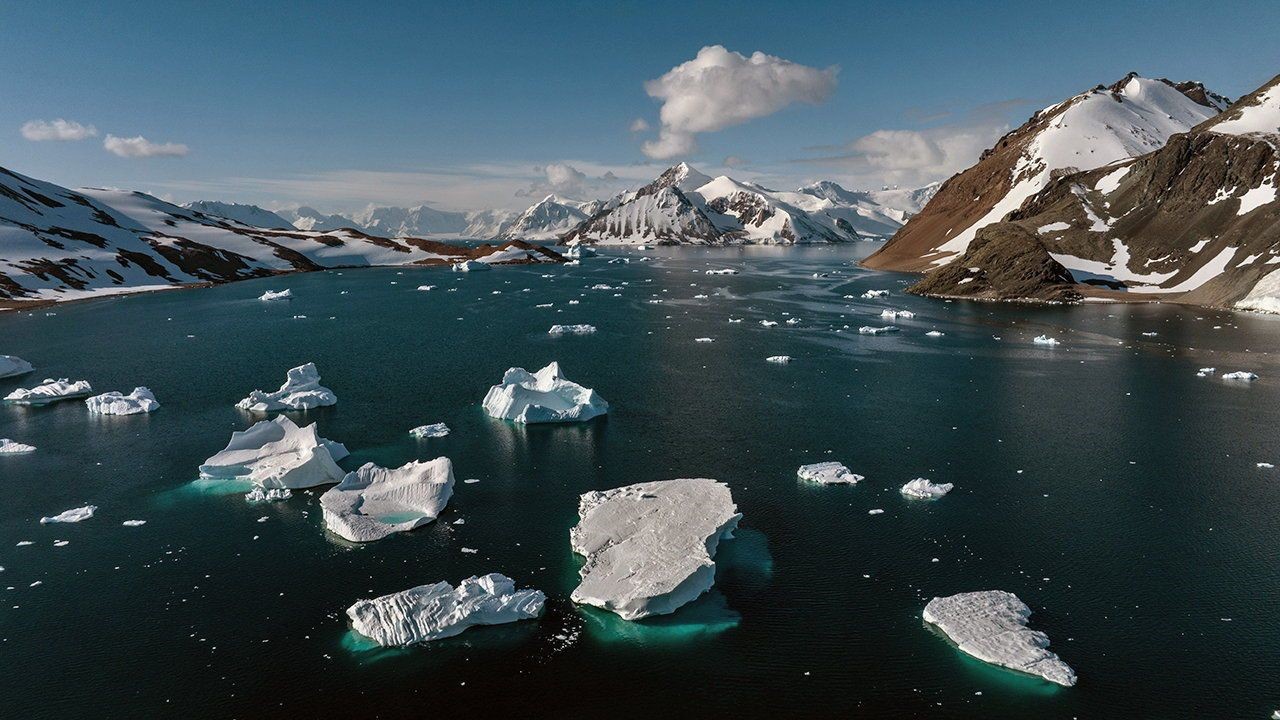Description

Disclaimer: Copyright infringement not intended.
Context
- Antarctica's sea ice, a critical component of the Earth's climate system, has been declining alarmingly, reaching record lows in recent years.
- This tendency is especially troubling because it defies previous forecasts and has serious implications for global climate dynamics.
Details
The Dynamics of Antarctic Sea Ice
- Antarctica's sea ice, a sheet of frozen seawater around the continent, fluctuates seasonally, with the greatest coverage in September and minimum coverage in February.
- It has consistently declined over the last two seasons, tracking well below the winter maximum levels observed since satellite monitoring began in the late 1970s.
- Furthermore, the summer minimum has dropped, with three record lows happening in the last seven years.
- This is concerning since sea ice plays an important role in regulating the Earth's temperature.
- It reflects solar energy into the atmosphere, aiding in global cooling.
- Furthermore, the production of sea ice leads to the generation of cold, salty water masses that drive global ocean currents.
- Consequently, any significant changes in Antarctica's sea ice have far-reaching consequences for the Earth's climate system.

Unpredictable Patterns
- Scientists are perplexed by the dramatic loss of Antarctic sea ice, which defies previous predictions.
- While the Arctic has had a long-term trend of decreasing sea ice, Antarctica experienced a minor increase in sea ice extent from 2007 to 2016, followed by a reduction in recent years.
- Climate models have a big problem as a result of this irregular behavior.
- Climate models, which are our major instruments for forecasting future climate, have struggled to represent Antarctic sea ice accurately.
- These models, which have been built over several decades, include several components that describe the atmosphere, oceans, energy transfer, land surface features, and sea ice evolution.
- While they have been successful in anticipating ocean and land surface warming, replicating Antarctic sea ice has proven difficult.
Modeling Challenges
- Several variables contribute to the modeling difficulties associated with Antarctic sea ice.
- Wind and wave patterns changing, natural variability, stratospheric ozone changes, and meltwater from the Antarctic ice sheet into the Southern Ocean have all been presented as possible explanations for the observed sea ice loss.
- None of these elements, however, have emerged as the ultimate reason.
- The lack of direct observations of sea ice thickness is one of the most fundamental difficulties in comprehending Antarctic sea ice.
- In contrast to the Arctic, where data from submarines and other sources provide insights into sea ice thickness, information on Antarctic sea ice thickness is limited.
- Existing data are largely from land-fast sea ice linked to land or ice shelves.
Sea Ice Thickness Variations
- Recent aberrations in sea ice thickness have complicated matters.
- Storms in McMurdo Sound drastically weakened the sea ice in 2022, which regularly reaches a thickness of two meters.
- Snow cover, which was thicker than typical in some regions, slowed ice formation by protecting it from the cold air.
- Although the thinner sea ice was caused by strong winds rather than melting, it seriously impacted Antarctic activities.
- Despite relatively low winter sea ice coverage around most of Antarctica, sea ice in McMurdo Sound formed similarly to most years in 2023.
- The extent to which climate change is responsible for these anomalies is unknown, but they may presage future patterns.

The Way Forward
- Predicting changes in Antarctic sea ice necessitates greater modeling capabilities, increased measurements of key elements driving sea ice changes, and novel measurement methods.
- The complexity of Antarctica’s sea ice decrease highlights the complex interplay of climate influences and the difficulties in forecasting their repercussions.
- The melting of Antarctic sea ice is a multidimensional conundrum with ramifications for the Earth's climate system.
- Understanding this phenomenon is critical for addressing climate change and its influence on polar regions, even though it defies previous expectations and poses modeling issues.
|
PRACTICE QUESTION
Discuss the current loss of Antarctic sea ice, its implications for global climate dynamics, and the challenges it provides to climate models. How may new modeling capabilities and measurements help us better understand this phenomenon?
|












